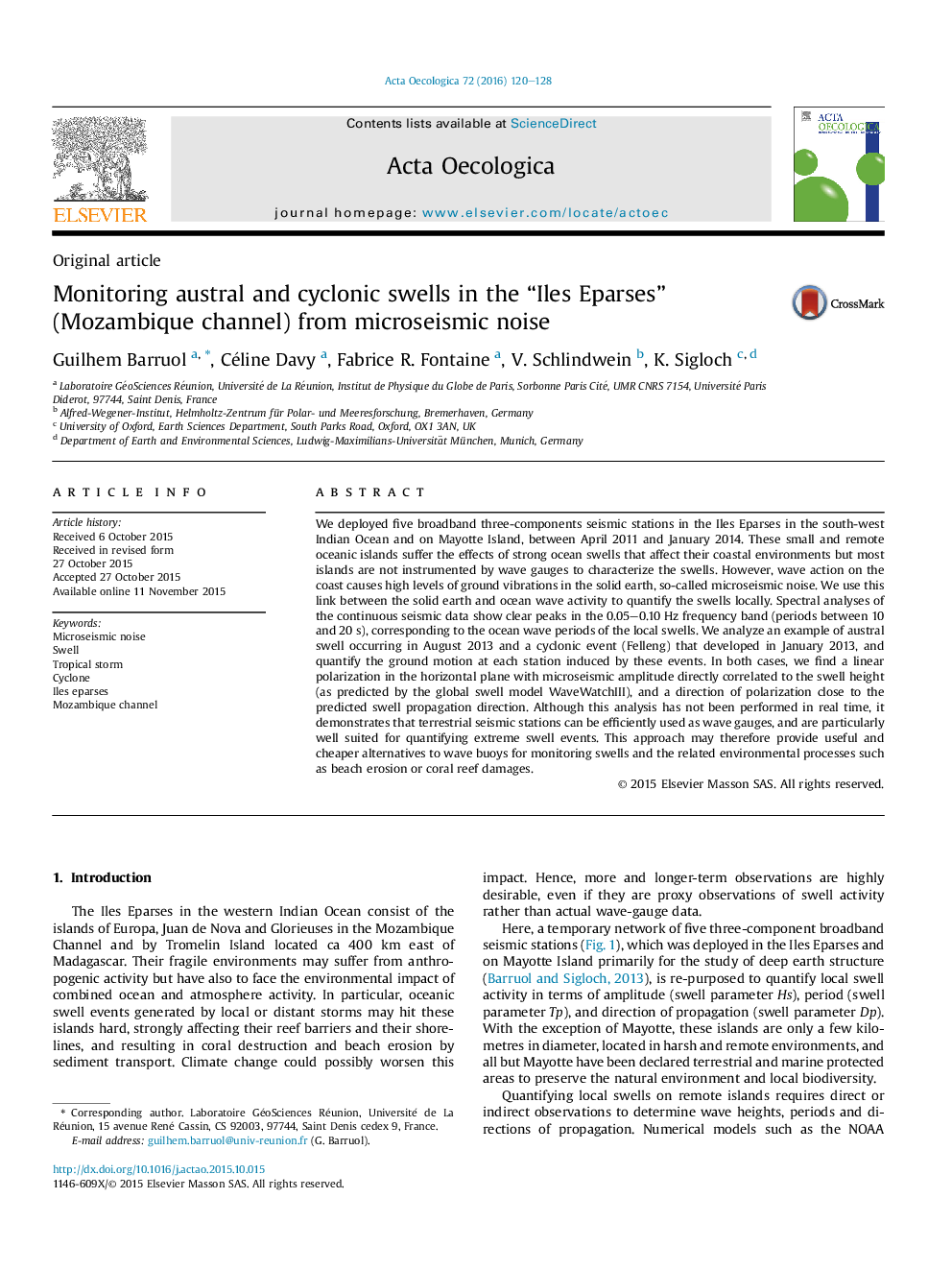| کد مقاله | کد نشریه | سال انتشار | مقاله انگلیسی | نسخه تمام متن |
|---|---|---|---|---|
| 4380774 | 1617700 | 2016 | 9 صفحه PDF | دانلود رایگان |
• We deployed a seismic network in the Iles Eparses, Mozambique Channel.
• We quantified swell parameters from primary microseismic noise.
• We determined swell periods from spectral analyzes.
• We determined swell height from microseismic noise amplitude.
• We determined swell direction from ground polarization analysis.
We deployed five broadband three-components seismic stations in the Iles Eparses in the south-west Indian Ocean and on Mayotte Island, between April 2011 and January 2014. These small and remote oceanic islands suffer the effects of strong ocean swells that affect their coastal environments but most islands are not instrumented by wave gauges to characterize the swells. However, wave action on the coast causes high levels of ground vibrations in the solid earth, so-called microseismic noise. We use this link between the solid earth and ocean wave activity to quantify the swells locally. Spectral analyses of the continuous seismic data show clear peaks in the 0.05–0.10 Hz frequency band (periods between 10 and 20 s), corresponding to the ocean wave periods of the local swells. We analyze an example of austral swell occurring in August 2013 and a cyclonic event (Felleng) that developed in January 2013, and quantify the ground motion at each station induced by these events. In both cases, we find a linear polarization in the horizontal plane with microseismic amplitude directly correlated to the swell height (as predicted by the global swell model WaveWatchIII), and a direction of polarization close to the predicted swell propagation direction. Although this analysis has not been performed in real time, it demonstrates that terrestrial seismic stations can be efficiently used as wave gauges, and are particularly well suited for quantifying extreme swell events. This approach may therefore provide useful and cheaper alternatives to wave buoys for monitoring swells and the related environmental processes such as beach erosion or coral reef damages.
Figure optionsDownload as PowerPoint slide
Journal: Acta Oecologica - Volume 72, April 2016, Pages 120–128
